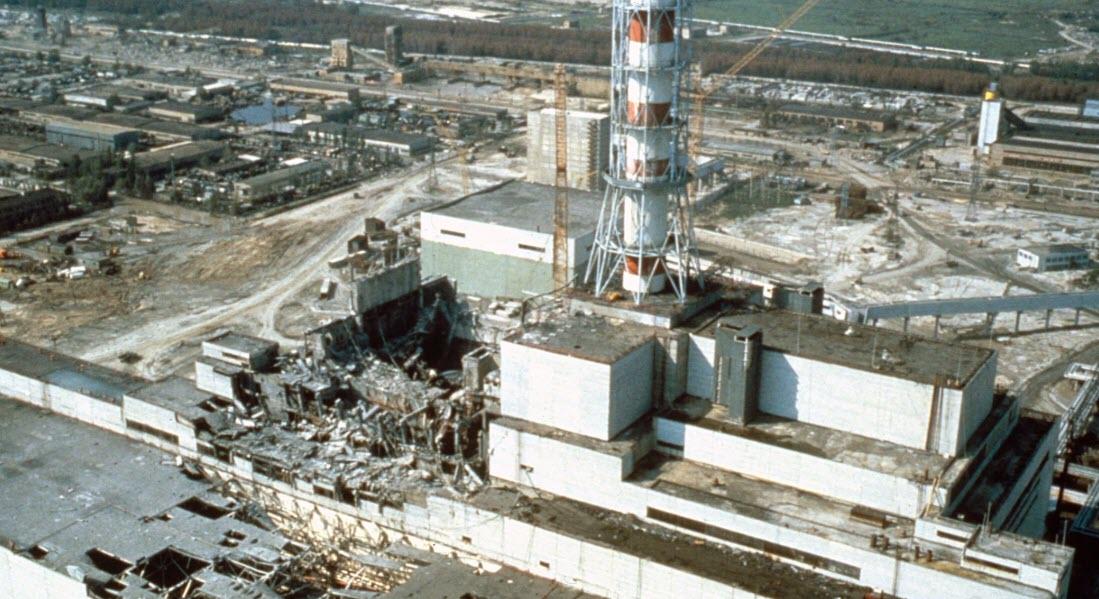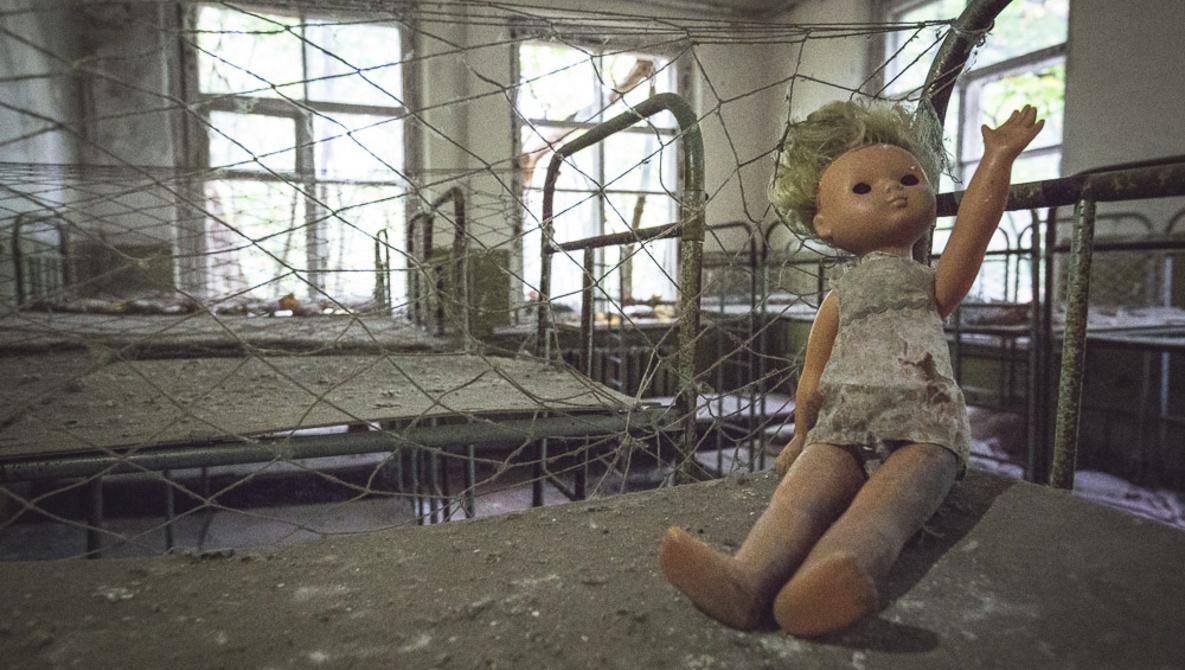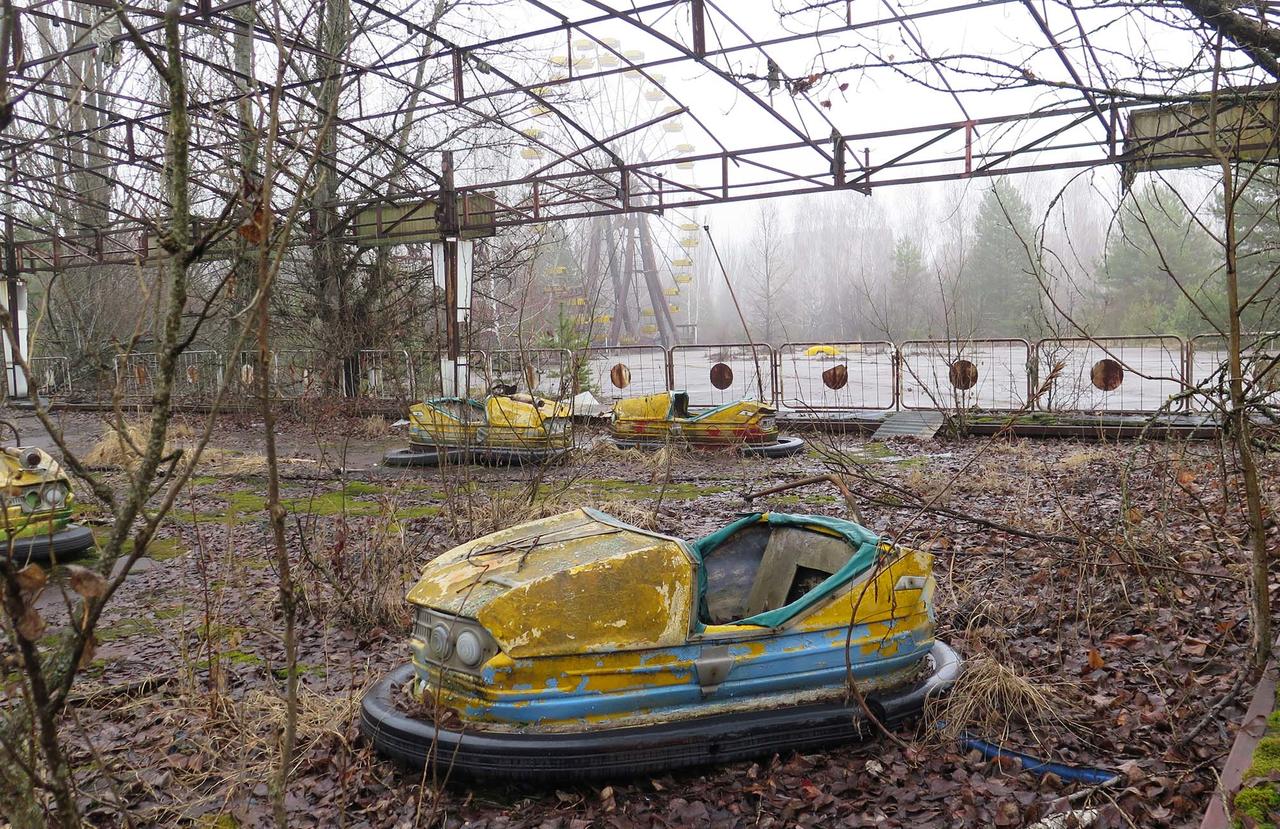Authored by John Laforge via Counterpunch.org,
April 26 marks the 33rd anniversary of the 1986 radiation disaster at Chernobyl reactor Number 4 in Ukraine, just north of Kiev the capital.
It is still nearly impossible to get scientific consensus on the vast extent of the impacts. The explosions and two-week long fire at Chernobyl spewed around the world something between one billion and nine billion curies of radiation — depending on whose estimates you choose to believe. The accident is classified by the UN as the worst environmental catastrophe in human history.
Chernobyl’s radioactive fallout has been blamed for hundreds of thousands of deaths, but the International Atomic Energy Agency (IAEA) acknowledges only 56 deaths among firefighters who suffered and died agonizing deaths in the disaster’s immediate aftermath. However, the IAEA’s officially chartered mission is “to accelerate and enlarge the contributions of nuclear power worldwide.” Because of its institutional bias, one can dispute nearly everything the IAEA says about radiation risk.
Also on the low-end of fatality estimates is the World Health Organization which has to have its radiation studies approved by the IAEA! In 2006, the WHO’s “Expert Group concluded that there may be up to 4,000 additional cancer deaths among the three highest exposed groups over their lifetime (240,000 liquidators; 116,000 evacuees, and the 270,000 residents of the Strictly Controlled Zones).” The WHO added to this 4,000 the estimate that “among the five million residents of areas with high levels of radioactive cesium deposition” in Belarus, the Russian Federation and Ukraine” predictions suggest “up to 5,000 additional cancer deaths may occur in this population from radiation exposure…”
Alternately, Ukraine’s Minister of Health Andrei Serkyuk estimated in 1995 that 125,000 people had already died from the direct effects of Chernobyl’s radiation. Serkyuk said a disproportionate share of casualties were among children, pregnant women and rescue workers or “liquidators.” Liquidators were soldiers ordered to participate in the removal and burial of radioactive topsoil, heavy equipment, trees, and debris, wearing no protective clothing, respirators or radiation monitors.
On January 10, 2010 The Guardian reported that “reputable scientists researching the most radiation-contaminated areas of Russia, Belarus and Ukraine” dispute the IAEA estimates that only 56 firefighters died “and that about 4,000 will die from it eventually.” The paper noted for example, that, “The International Agency for Research on Cancer, another UN agency, predicts 16,000 deaths from Chernobyl; an assessment by the Russian academy of sciences says there have been 60,000 deaths so far in Russia, and an estimated 140,000 in Ukraine and Belarus.”
The Guardian further noted that, “Meanwhile, the Belarus national academy of sciences estimates 93,000 deaths so far and 270,000 cancers, and the Ukrainian national commission for radiation protection calculates 500,000 deaths so far.”
The Los Angeles Times reported in 1998 that, “Russian officials estimated 10,000 Russian ‘liquidators’ died.” The article quoted health officials who said “close to 3,600 Ukrainians who took part in the cleanup effort have died of radiation exposure.” In 2001, the BBC upped the estimate and reported, “More than 30,000 Russians have died from radiation, half of whom were involved in dealing with the immediate aftermath….”
An August 4, 2003 New Yorker magazine article noted vaguely that, “Thousands of people died of cancers and other diseases in the years after the Chernobyl disaster,” while The New York Times said April 23, 2003, “Thyroid cancer, leukemia and other cancers have skyrocketed in the area around the reactor.” Around the 10th anniversary, under the headline, “Genetics: Chernobyl’s burst in mutations,” The Washington Post reported that, “Studies indicated that people … living near Chernobyl are giving birth to offspring with a higher number of genetic mutations.” In her April 27, 1996 dispatch for the Associated Press, journalist Angela Charlton noted “a hundred-fold increase in the incidence of childhood thyroid cancers in the affected region.”
Chernobyl’s health effects were felt much further away than the area around the reactor. The Los Angeles Times reported July 25, 1996, that radiation from Chernobyl was “linked to leukemia cases in Greece.” Epidemiologic Reviews in Oxford Journals for March 30, 2005 reported, “The releases of radioactive materials were such that contamination of the ground was found to some extent in every country in the Northern Hemisphere.” In its 1988 Report to the General Assembly, the UN Scientific Committee on the Effects of Atomic Radiation found, “The accident at the Chernobyl … resulted in radioactive material becoming widely dispersed and deposited … throughout the northern hemisphere.”
In 2001, Alex Kuzma, executive director of the Children of Chernobyl Relief Fund, documented an 80-fold increase in cancers in Belarus and Ukraine, and reported that 50 million people, including 1.26 million children, are affected. Eugene Cahaill of the Dublin-based Chernobyl Children’s Project reported in the Irish Times in 2005 that, “Nine million people in Belarus, the Ukraine and Western Russian have been directly affected by the fallout.”
Thirty-six hundred deaths, or 125,000? Nine million people affected, or 50 million? The health effects of exposing everyone in the hemisphere to Chernobyl’s radiation (and Windscale’s, and Santa Susana’s, and Fukushima’s) — effects that are often delayed for decades — are quite incalculable. Got cancer?
via ZeroHedge News http://bit.ly/2GAjian Tyler Durden


